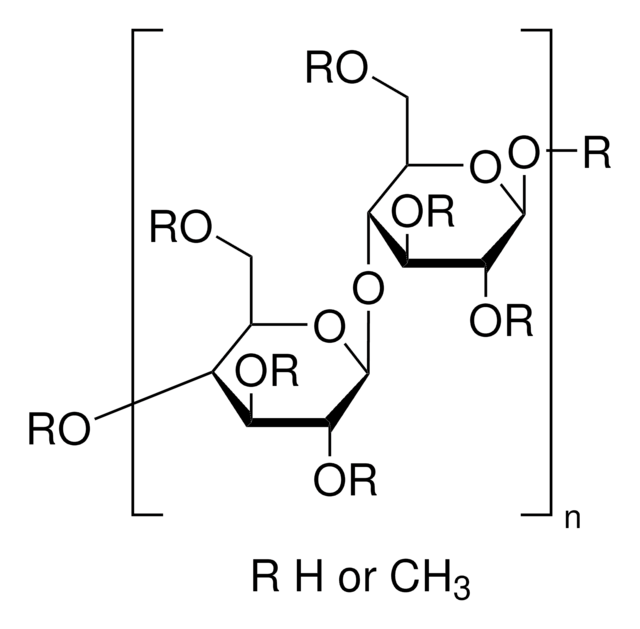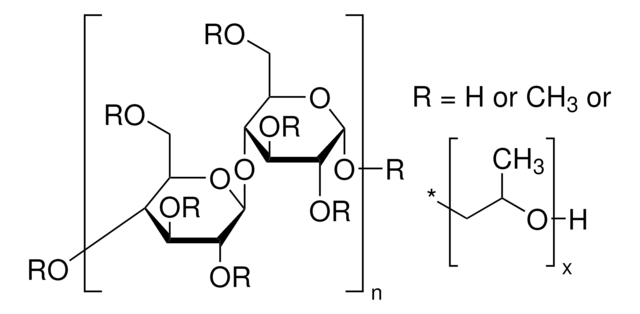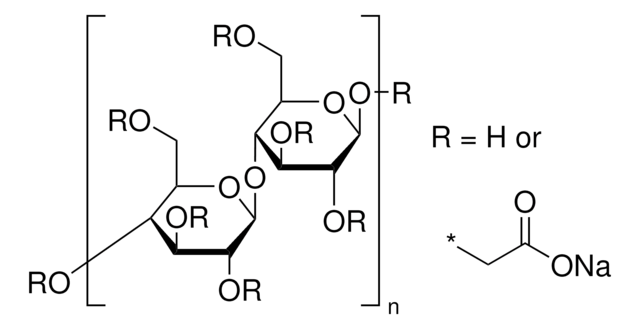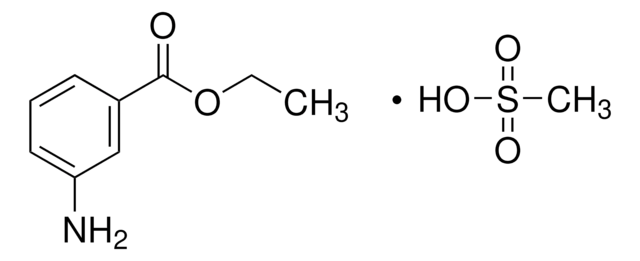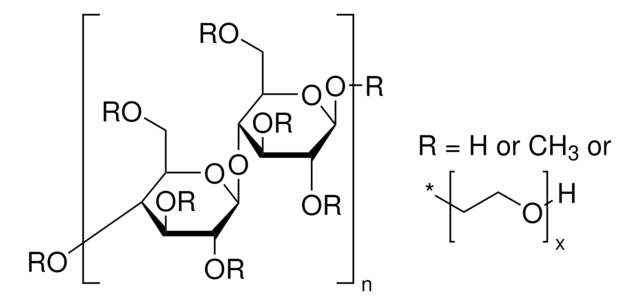M0387
Methyl cellulose
viscosity: 1,500 cP
Iniciar sesiónpara Ver la Fijación de precios por contrato y de la organización
About This Item
Número de CAS:
MDL number:
UNSPSC Code:
12352201
PubChem Substance ID:
NACRES:
NA.25
Productos recomendados
biological source
wood (pulp cellulose)
form
powder
color
white to off-white
viscosity
1,200-1,800 cP, 2 % in water(20 °C)
storage temp.
room temp
SMILES string
[*]OC[C@H]1O[C@@H](O[C@@H]2[C@@H](CO[*])O[C@@H](O[*])[C@H](O[*])[C@H]2O[*])[C@H](O[*])[C@@H](O[*])[C@@H]1O[*]
InChI key
YLGXILFCIXHCMC-JHGZEJCSSA-N
¿Está buscando productos similares? Visita Guía de comparación de productos
General description
Methyl cellulose is a tough, non-toxic material. It is odorless and tasteless. Hence, methyl cellulose is widely used as an adhesive in the food packaging industry. In water-soluble adhesives, it is utilized as a thickening agent. Methyl cellulose is also used as a viscosity control agent. In the cosmetic industry, it is used as an emulsifier, binder and stabilizer.
Application
Methyl cellulose has been used:
- as a component of an embryo medium to culture zebrafish embryos for motility assays
- to mount haploid/tetraploid zebrafish embryos on slides for live imaging
- to enhance the viscosity of artificial seawater to study the flagellar waves of Ciona spermatozoa
Other Notes
To gain a comprehensive understanding of our extensive range of Polysaccharides for your research, we encourage you to visit our Carbohydrates Category page.
Storage Class
11 - Combustible Solids
wgk_germany
WGK 1
flash_point_f
Not applicable
flash_point_c
Not applicable
ppe
Eyeshields, Gloves, type N95 (US)
Elija entre una de las versiones más recientes:
¿Ya tiene este producto?
Encuentre la documentación para los productos que ha comprado recientemente en la Biblioteca de documentos.
Los clientes también vieron
Michael Shoujie Sun et al.
PLoS genetics, 15(5), e1008162-e1008162 (2019-05-29)
The first meiotic division reduces genome ploidy. This requires pairing of homologous chromosomes into bivalents that can be bi-oriented within the spindle during prometaphase I. Thereafter, pairing is abolished during late metaphase I, and univalents are segregated apart onto opposite
Ivana Hermanova et al.
The Journal of experimental medicine, 217(6) (2020-03-29)
Gene dosage is a key defining factor to understand cancer pathogenesis and progression, which requires the development of experimental models that aid better deconstruction of the disease. Here, we model an aggressive form of prostate cancer and show the unconventional
The zebrafish mutant lessen: an experimental model for congenital enteric neuropathies
Uyttebroek L, et al.
Neurogastroenterology and Motility, 28(3), 345-357 (2016)
S Mori et al.
Oncogene, 28(31), 2796-2805 (2009-06-02)
The oncogenic phenotype is complex, resulting from the accumulation of multiple somatic mutations that lead to the deregulation of growth regulatory and cell fate controlling activities and pathways. The ability to dissect this complexity, so as to reveal discrete aspects
Handbook of Adhesives and Surface Preparation (2011)
Nuestro equipo de científicos tiene experiencia en todas las áreas de investigación: Ciencias de la vida, Ciencia de los materiales, Síntesis química, Cromatografía, Analítica y muchas otras.
Póngase en contacto con el Servicio técnico